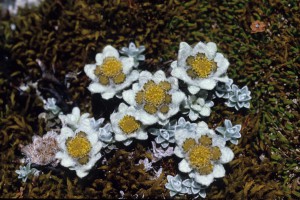About the key to native plants of schools & marae
Some of the scored plants do not have their own individual fact sheets, because they will be related to one of the main 42 native species that have been chosen. These 42 were chosen as species commonly found in school grounds and Marae in the Canterbury region; these include trees, shrubs, ferns, tufted plants, grasses and flaxes. The 42 fact sheets include images, botanical descriptions, links to scientific papers and other websites, and a section on similar or related species. Additionally, there is information on general Māori uses and medicinal uses for most of these native plants.
In the Hebe fact sheets there is a link to the Hebe Information Sheet, which provides current scientific information on the origins of Hebe in New Zealand, and the Adaptive Radiation of Hebe is also explained and some Hebe mages included.
Gathering your Plant Sample(s)
Firstly, you need to observe how the plant is growing, is it a small shrub or a large tree or growing directly from the ground without a trunk? Your plant sample should be big enough to see how the leaves grow on the branch, noticing if they grow opposite to each other or do they alternate or are they hand-shaped, etc. Ideally you would also get a flower if possible or a fruit to help you identify the plant. You will need to measure your leaf so you will need a ruler as well.
Characters
This Key has four main character headings PLANT TYPE, LEAVES, FLOWERS, and FRUIT, each of these headings has plant characters that are used to help identify the plant.
Most of these characters have an .html sheet attached, which explains how to score each of these plant characteristics. The following is a list of these:
- Under the heading PLANT TYPE is Growth Habit, which provides explanation of the different ways plants grow.
- Under the heading LEAVES is:
- Firstly Leaf Type, which explains the difference between a compound and a simple leaf,
- Next is Leaf or Leaflet Position, which shows the different ways leaves can grow on branches or from the ground,
- This is followed by Leaf or Leaflet Shape, which explains the different leaf shapes,
- The Leaf or Leaflet Number is explained next, using pictorial examples.
- And the Leaf or Leaflet Margin or leaf edge is explained and categorised in the following .html sheet.
- The Leaf's Midrib or main vein is categorised in the next sheet in simple language, according to how it looks and feels.
- Followed by the presence or absence of a Leaf Petiole, and it's Length is also explained with an attached image as well.
- The presence or absence of Leaf Variegation is explained next using simplified language,
- Followed by an equally descriptive sheet on Leaf Indumentum (leaf hairiness).
- The different Leaf Colours are categorised next, followed by a brief .html sheet and attached image for both Leaf Width and Leaf Length.
- Under the Heading FLOWERS there is Flower Colour and the Flower Diameter with an attached image showing how to measure the flower for this Key.
- Under FRUIT there is Fruit Colour and Fruit Length and Fruit Width which can be entered and used to help identify plants in this Key.
Acknowledgements
This key was developed by Ellex Stewart in 2009 at Landcare Research, Lincoln, as a Teacher Fellow. The New Zealand Science, Mathematics, and Technology Teacher Fellowship is administered by the Royal Society of New Zealand.
I especially thank the following at Manaaki Whenua – Landcare Research for assistance:
- Peter Heenan, for applying to the RSNZ and his botanical expertise
- Murray Dawson, for advice on using Lucid
- David Glenny, for helpful discussion and advice on fact sheets
- Sue Scheele for permission to include information from the Ngā Tipu Whakaoranga – Māori Plant Use Database

